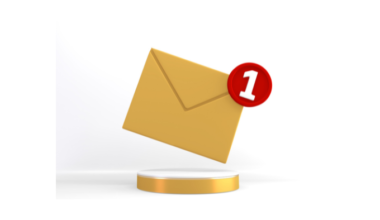Thank you notes in business emails are not just polite conversation starters; they are an essential part of successful communication. A well-written thank you can strengthen bonds, show gratitude, and keep your correspondence in a positive frame of mind.
Although “Thank you for your reply” is a standard in business emails, using it too often can make your correspondence look monotonous. We are here to assist because of this. We’ll look at some formal methods to express “Thank you for your reply” in this post.
These substitutes will not only maintain the interest and novelty of your emails, but they will also show off your professionalism. Let us begin by learning the appropriate professional responses to “Thank you for your reply.”
Why Gratitude Matters in Professional Emails
Expressing gratitude in professional emails is not merely a courtesy; it’s a strategic communication tool that can profoundly enhance professional relationships.
In today’s fast-paced business environment, where emails serve as a primary mode of communication, the simple act of saying “thank you” can have significant effects.
- Acknowledges the effort and time invested by the recipient: In responding to your message. It demonstrates respect for their contribution and expertise, fostering a positive impression of professionalism and courtesy.
- Expresses appreciation: It can strengthen the rapport between colleagues, clients, and partners. It builds trust and goodwill, making it easier to collaborate effectively and resolve conflicts amicably when they arise.
- Enhance workplace culture: Helps promote a supportive and appreciative atmosphere. When individuals feel valued and recognized for their efforts, morale and productivity tend to increase, contributing to overall team cohesion and success.
In a competitive business landscape, where relationships often determine success, genuine expressions of gratitude can differentiate you and your organization. They reflect an understanding of the importance of interpersonal dynamics and set a precedent for respectful and collaborative communication.
Therefore, incorporating gratitude into your professional emails is not just a nicety but a strategic choice.
It cultivates positive relationships, enhances workplace culture, and reinforces your reputation as a considerate and effective communicator in the business world.
The Impact of Expressing Gratitude on Professional Relationships
Expressing gratitude fosters a positive work environment, which is essential for building strong professional relationships.
When you acknowledge someone’s effort, time, or assistance, it not only makes the recipient feel valued and appreciated but also strengthens your relationship with the recipient.
This mutual respect and recognition can lead to more collaborative and productive working relationships.
Incorporating gratitude into your professional emails can also improve your reputation and credibility. People are more likely to trust and respect colleagues who show appreciation and recognize their contributions.
This can be particularly important in leadership roles, where expressing gratitude can motivate and inspire your team, leading to higher morale and better overall performance.
Enhancing Communication and Building Rapport with Well-Crafted Thank You Messages
A well-crafted thank you email does more than just convey gratitude; it enhances communication and helps build rapport. Here are some key elements to consider:
- Specificity: Be specific about what you are grateful for. Instead of a generic “thank you,” mention the particular action or effort you are acknowledging. For example, “Thank you for your thorough analysis of the project data,” shows that you recognize and value their specific contribution.
- Timeliness: Send your thank you message promptly. Timely gratitude reinforces the positive impact of the action you are acknowledging and shows that you are attentive and considerate.
- Sincerity: Ensure that your message is sincere and genuine. Authentic gratitude is more likely to resonate with the recipient and strengthen your professional relationship.
- Impact: Mention how their action or assistance has positively impacted you or the project. This not only reinforces their value but also helps them understand the significance of their contribution.
Professional Alternatives to “Thank You for Your Reply”
In professional communication, variety is key to keeping your emails engaging and effective. Overusing the phrase “Thank you for your reply” can make your messages sound repetitive and uninspired.
By incorporating different expressions of gratitude, you can convey appreciation while maintaining a fresh and professional tone. Here are some excellent alternatives to consider:
1. “I appreciate your prompt response.”
Context: This phrase is particularly suitable when you need a quick answer to proceed with your tasks. It acknowledges the recipient’s efficiency and promptness, which is often crucial in time-sensitive situations.
Example Sentence: “I appreciate your prompt response to my query about the project deadline. Your quick feedback allows us to move forward with the next steps without delay.”
2. “Thank you for the detailed information.”
Context: Use this alternative when the recipient has provided comprehensive and thorough information. It shows that you value the effort and time taken to give you a detailed response.
Example Sentence: “Thank you for the detailed information regarding the new software implementation. Your thorough explanation has clarified all the points we were concerned about.”
3. “Your quick reply is much appreciated.”
Context: This phrase is ideal when the speed of the response is crucial, and you want to acknowledge the recipient’s effort in getting back to you quickly.
Example Sentence: “Your quick reply is much appreciated. With your timely update, we can ensure that the project remains on schedule.”
4. “I am grateful for your timely response.”
Context: Use this expression when the timing of the response is particularly important, and you want to convey a deeper sense of gratitude.
Example Sentence: “I am grateful for your timely response to the contract revisions. Your prompt feedback has been invaluable in finalizing the agreement.
5. “Thank you for your thorough reply.”
Context: This phrase is best used when the recipient has provided a comprehensive and well-considered response. It indicates that you recognize and value their detailed input.
Example Sentence: “Thank you for your thorough reply regarding the budget proposal. Your insights and detailed breakdown have been incredibly helpful for our planning process.”
By utilizing these professional alternatives, you can keep your email communications varied, engaging, and effective.
Each phrase serves to acknowledge different aspects of the recipient’s response, ensuring that your gratitude is specific and meaningful.
Scenario-Based “Thank You for the Reply” Templates
We’ve put together a variety of templates for “thank you for the reply” messages. These are for thanking people in customer service, after a job application, and more. With these templates, you can quickly make your messages fit the situation. This shows you’re professional and pay attention to details.
- Customer Service Response: Thank you for your prompt reply. Your assistance has been invaluable in resolving my issue.
- Job Application Follow-Up: Thank you for considering my application. I appreciate your prompt response and look forward to discussing this opportunity further.
- Business Inquiry Acknowledgment: Thank you for getting back to me. Your insights have clarified my questions and are greatly appreciated.
Using these templates demonstrates professionalism and attention to detail, reflecting positively on your communication skills. Customize these messages to suit your specific needs and make a lasting impression in your professional interactions.
Tips for Crafting Professional Email Responses
Writing effective and professional thank you emails can significantly impact how you are perceived in the workplace. Here are some tips to help you craft emails that are polished, clear, and impactful.
1. Personalization
Personalizing your emails goes a long way in making the recipient feel valued. Instead of using generic phrases, tailor your thank you to the specific context. Mention the person’s name and refer to the details of their response or action.
This shows that you have taken the time to read and appreciate their effort.
Example: Instead of saying, “Thank you for your reply,” try “Thank you, Sarah, for your detailed insights on the marketing strategy.”
2. Clarity
Clarity is crucial in professional communication. Ensure that your thank you message is clear and to the point. Avoid using jargon or complex language that could confuse the recipient. A clear and concise message is more likely to be well-received and understood.
Example: “Thank you for your quick response to my inquiry about the budget. Your detailed explanation has been very helpful.”
3. Positive Tone
Maintaining a positive tone in your emails can create a pleasant and professional atmosphere. Even if the subject matter is serious, framing your gratitude in a positive light can help in building stronger relationships.
Example: “I appreciate your prompt response and the detailed information provided. Your assistance is invaluable to our team.”
4. Proofreading
Proofreading is essential to ensure your email is free from errors and maintains a professional appearance. Spelling mistakes, grammatical errors, or awkward phrasing can undermine your professionalism.
Take the time to review your email before hitting send.
Example: After writing your email, read it aloud or use a grammar checking tool to catch any mistakes.
5. Professional Appearance
A professional appearance goes beyond just the content of your email. Ensure that your email format is clean and organised.
Use a professional font, appropriate salutations, and signatures. Avoid using excessive exclamation marks or emoticons, which can appear unprofessional.
By following these tips, you can craft professional thank you emails that are not only effective but also leave a positive impression on the recipient.
To Wrap Up
Mastering the art of expressing gratitude in professional emails is more than a courtesy; it’s a strategic tool that enhances communication and fosters positive relationships.
Throughout this article, we’ve explored seven effective alternatives to convey appreciation for a reply, from straightforward acknowledgments to more nuanced expressions of gratitude.
By diversifying your responses, you not only demonstrate respect for the recipient’s time and effort but also tailor your communication to reflect sincerity and professionalism. Remember, the way we express gratitude can leave a lasting impression on how we are perceived in business settings.
Call to Action
Feel inspired to elevate your email communication? Share your own tips and suggestions for professional email responses in the comments below. Don’t forget to subscribe to our blog for more insights on mastering professional communication.
Enhance your email etiquette today and build stronger connections in your professional endeavours.







